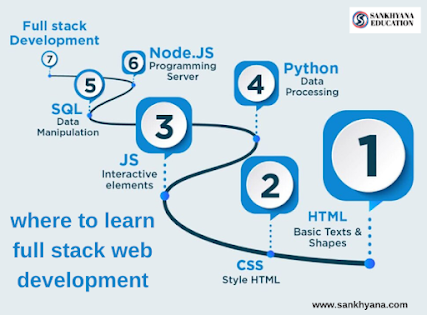How to Become a Data Scientist
How to Become a Data Scientist
Data science is a rapidly growing field that combines statistics, programming, and domain expertise to extract valuable insights from data.
The Ultimate Guide on How to Become a Data Scientist
Introduction:
Data science is a rapidly growing field that combines statistics, programming, and domain expertise to extract valuable insights from data. If you're passionate about working with data and solving complex problems, a career as a data scientist may be the perfect fit for you. In this blog post, we will provide you with a step-by-step guide on how to become a data scientist.
1. Understand the Role:
To embark on the path of becoming a data scientist, it's crucial to have a clear understanding of the role and responsibilities involved. Data scientists analyze large and complex datasets to identify patterns, develop predictive models, and provide actionable insights. They utilize various tools and techniques such as statistical analysis, machine learning, and data visualization.
2. Develop a Strong Foundation:
To become a data scientist, you need a solid foundation in mathematics, statistics, and programming. Start by acquiring a good understanding of concepts like linear algebra, calculus, probability, and statistics. Additionally, familiarize yourself with programming languages such as Python or R, which are widely used in data science.
3. Gain Hands-On Experience:
Theory alone is not enough in data science. Employers value practical experience, so it's essential to work on real-world projects. Start by exploring publicly available datasets and practicing data cleaning, preprocessing, and visualization. Participate in Kaggle competitions or collaborate on open-source projects to enhance your skills and build a portfolio.
4. Learn Machine Learning:
Machine learning is at the core of data science. Acquire a thorough understanding of machine learning algorithms, such as regression, classification, clustering, and deep learning. Learn how to evaluate and fine-tune models, and explore techniques for feature selection and dimensionality reduction. Implement these algorithms in Python or R to gain hands-on experience.
5. Master Data Wrangling and Visualization:
Data wrangling involves cleaning, transforming, and preparing data for analysis. Learn how to handle missing values, outliers, and data inconsistencies. Familiarize yourself with data manipulation libraries such as Pandas in Python or dplyr in R. Additionally, develop skills in data visualization using libraries like Matplotlib, Seaborn, or ggplot2 to effectively communicate insights.
6. Stay Updated on Tools and Technologies:
Data science is a dynamic field with constantly evolving tools and technologies. Stay updated with the latest advancements, libraries, and frameworks. Familiarize yourself with popular tools like Jupyter Notebook, TensorFlow, PyTorch, or scikit-learn. Understanding cloud platforms like AWS, Azure, or Google Cloud can also be beneficial.
7. Pursue Advanced Education:
While not mandatory, pursuing an advanced degree in a related field can boost your chances of landing a data science role. Consider programs in statistics, computer science, or data science itself. These programs provide structured learning, exposure to advanced topics, and access to networking opportunities.
8. Develop Soft Skills:
In addition to technical skills, data scientists need strong soft skills. Effective communication, problem-solving, and critical thinking are essential in collaborating with stakeholders, presenting findings, and explaining complex concepts to non-technical audiences. Work on improving your written and verbal communication skills to excel in this aspect.
9. Network and Join Communities:
Networking is crucial for career growth in data science. Attend conferences, meetups, and workshops to connect with industry professionals. Engage in online communities like Kaggle, GitHub, or Stack Overflow to share knowledge and learn from others. Building a strong professional network can open doors to job opportunities and collaborations.
10. Apply for Data Science Positions:
Once you have acquired the necessary skills and built a portfolio, start applying for data science positions. Craft a compelling resume that highlights your skills and projects. Prepare for interviews by practicing technical questions, demonstrating your problem-solving abilities, and showcasing your portfolio. Don't get discouraged by rejections; keep learning and refining your skills.
Conclusion:
Becoming a data scientist requires a combination of technical expertise, practical experience, and continuous learning. By following the steps outlined in this guide, you can pave your way towards a successful career in data science. Remember to stay curious, be persistent, and never stop exploring new techniques and technologies. Good luck on your journey to becoming a data scientist!


.png)

Comments
Post a Comment